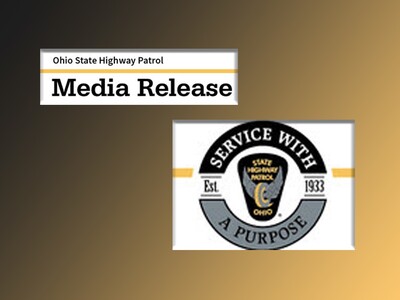Ohio needs to make period equity a priority by Melissa Martin
Ohio needs to make period equity a priority
Talking and writing about menstruation in public is no longer taboo. Menstruation is a normal and natural biological function. So, if you are uncomfortable reading this column – then just get over your embarrassment.
“Period poverty: The limited or inadequate access to menstrual products or menstrual health education as a result of financial constraints or negative socio-cultural stigmas associated with menstruation.” Visit www.period-action.org.
I just read a 2022 eye-opening online article from one of my favorite education websites. “How to Build a Menstruation Station at Your School” by Sarah Laffin. Girls without feminine products stay home from school (or they use socks, rags, bunched up toilet paper). The menstruation cycle usually occurs one time per month. That accounts for days missed for nine months. Nearly one in four students struggles to afford period supplies, which has a major impact on their ability to learn. Having access to clean and free period products helps menstruating girls stay in school and focus on learning. Visit www.edutopia.org.
The only publicly available study tracking the impact of period poverty among U.S. teenage students (funded by PERIOD and Thinx) found that 23 percent of students have struggled to afford period products. Visit www.period.org/uploads/State-of-the-Period-2021.pdf.
Currently, there are 140 bills in 37 states, including 8 bills introduced on the federal level, to advance menstrual equity by requiring free access to period products, eliminating tax, and requiring ingredient disclosure. California addressed the lack of access in 2017 by requiring schools in low-income districts to provide free period products in schools.
H.R.1882 - Menstrual Equity For All Act of 2019. 116th Congress Bill Summary: Expands specified programs to include access to menstrual hygiene products. Specifically, the bill requires that such products are made available to (1) public school students, (2) incarcerated or detained individuals, (2) homeless individuals, (3) individuals using health care flexible-spending accounts, (4) Medicaid recipients; (5) employees of organizations with at least 100 workers, and (6) individuals accessing federal buildings. Visit www.congress.gov/bill/116th-congress/house-bill/1882.
H.R. 3614 - Menstrual Equity For All Act of 2021. It also establishes a demonstration grant program to support the provision of free menstrual products on campuses of institutions of higher education and permits elementary and secondary schools to use certain grants to provide
menstrual products to students.
“Menstrual products are not covered by food stamps or WIC. No one should EVER be forced to choose between food and tampons. That’s why we have donated over 500,000 menstrual products to organizations in the USA that support menstruators in need,” according to Aunt Flow’s website.
The website www.womensvoices.org lists the states that are in the process of addressing menstrual equity, but Ohio was absent.
What is Ohio doing? Ohio ended the sale tax for menstrual products in 2020. The “Pink Tax” was considered discriminatory against women as many hygiene products used by men are not taxed.
For more than 40 years, menstrual products have been available to the Columbus City School District’s students through the school nurse’s office. Making them readily accessible ensures that students will have the products at the time of need: in the bathroom. Visit www.columbus.gov.
Central Ohio lags in providing free feminine products in schools, according to a 2019 article in The Columbus Dispatch.“But many educators say cost, especially in cash-strapped schools, is an obstacle. When legislators mandate free menstrual products but don't provide the funds to purchase them, schools must assume the expense.”
Columbus School for Girls, Worthington Public Schools and United Schools Network are among the education institutions that are working on providing Aunt Flow products in their bathrooms. Visit www.goauntflow.com.
I would be remiss if I didn’t give kudos to awesome Ohio school nurses for keeping menstrual products in their office for girls over decades. A giant thanks.
In 2020, students across the country raised money, lobbied, held school assemblies and launched social media campaigns to make period products free in their schools. Middle school students created a GoFundMe account to buy products to place in schools. You go girls!
“Free Tampons and Pads are Making Their Way to U.S. Colleges, High Schools and Middle Schools” is an article at www.freethetampons.org/free-tampons-are-making-their-way-to-us-schools….
Ponder on the following questions: Should Ohio public schools offer free tampons and pads at low-income area school? Who should foot the bill for these products? The school or school district, the community, the county, the state, the federal government, the Ohio Department of Education. Or should schools use community fundraisers?
Readers, what can you do? Donate menstrual products to your local schools. Contact your state representatives. Respond with a Letter to the Editor, whether you agree or disagree.
Melissa Martin lives in Ohio.











